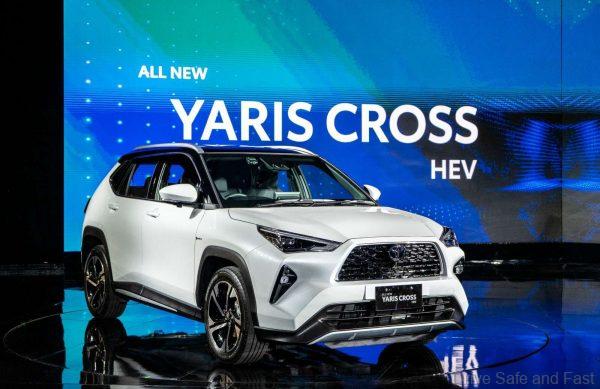The Perodua D66B is now in development and could be the Ativa’s big brother.
The Ativa has been quite the success story for Perodua, launching during the pandemic in 2021 and still managing to attract huge sales figures throughout the semi conductor shortage period and beyond. It’s clear that Perodua sees the logic in expanding their range of crossovers and that is why there’s a new D66B or “Nexis” in development for our market. But what exactly is the D66B, and how will it compare to the Ativa? After all, many already view the Ativa as a crossover alternative to the Myvi, and this new D66B is also being built on the same fundamental DNGA platform as the Ativa, so which market segment can Perodua tackle with this new D66B?

Let’s start with the the donor cars that form the basis of these Perodua models. The Ativa shares its DNA with the Daihatsu Rocky and Toyota Raize while the D66B is being based on the new AC200 Toyota Yaris Cross (not to be confused with the XP210 Yaris Cross for Europe, Oceania, Singapore and Japan). The AC200 Yaris Cross was developed by the Emerging-market Compact Car Company (ECC), which is a joint Toyota-Daihatsu company. It has the same engine compartment as the Toyota Veloz, but the rest of the car is uniquely developed.

In terms of dimensions, the Ativa/Rocky/Raize is a much smaller vehicle. Let’s compare the Raize with the Yaris Cross:
| Raize | Yaris Cross | |
| Length | 4030 mm | 4310 mm (+7%) |
| Width | 1710 mm | 1770 mm (+3.5%) |
| Height | 1605 mm | 1615 mm (+0.3%) |
| Ground Clearance | 200 mm | 212 mm (+6%) |
| Wheelbase | 2525 mm | 2620 mm (+3.4%) |
| Fuel Tank (petrol model) | 36 L | 42 L (+16.7%) |
As you can see, the Yaris Cross is larger than the Raize on paper and this difference may be even more noticeable inside and in terms of boot space.

While the Ativa is certainly a very attractive package on the outside, its two biggest weaknesses are its rough 3-cylinder engine and the poor material quality in the cabin. Here is where the Perodua D66B can deliver a huge upgrade. It’s expected to ship here with the same powertrain as the new Alza – the 1.5L naturally-aspirated 4-cylinder and a D-CVT. This is a much smoother set-up than what’s available on the Ativa. The new Alza also has some better cabin materials than the Ativa, so it’s likely this will translate to a nicer cabin than the Ativa’s too.
The real question will be the price. The Ativa and Alza both start at RM62,500, but the Ativa maxes out at RM73,400 while the Alza maxes out at RM75,500. Could the new D66B or Nexis be the first Perodua to be assembled in Malaysia that costs more than RM80,000? We’ll have to wait and see.